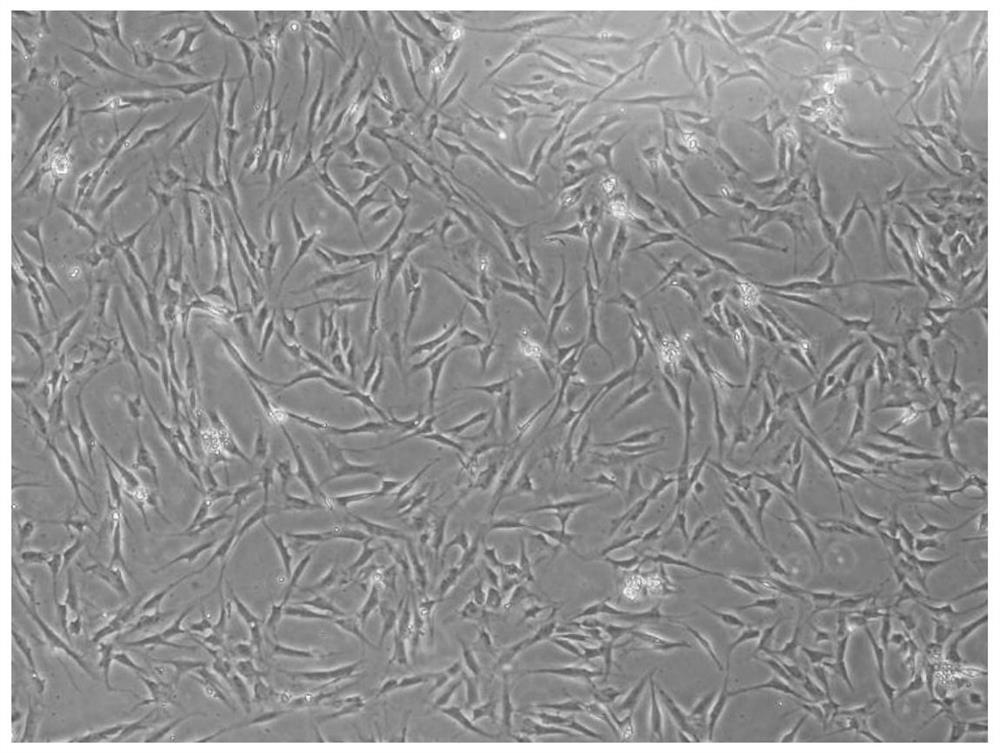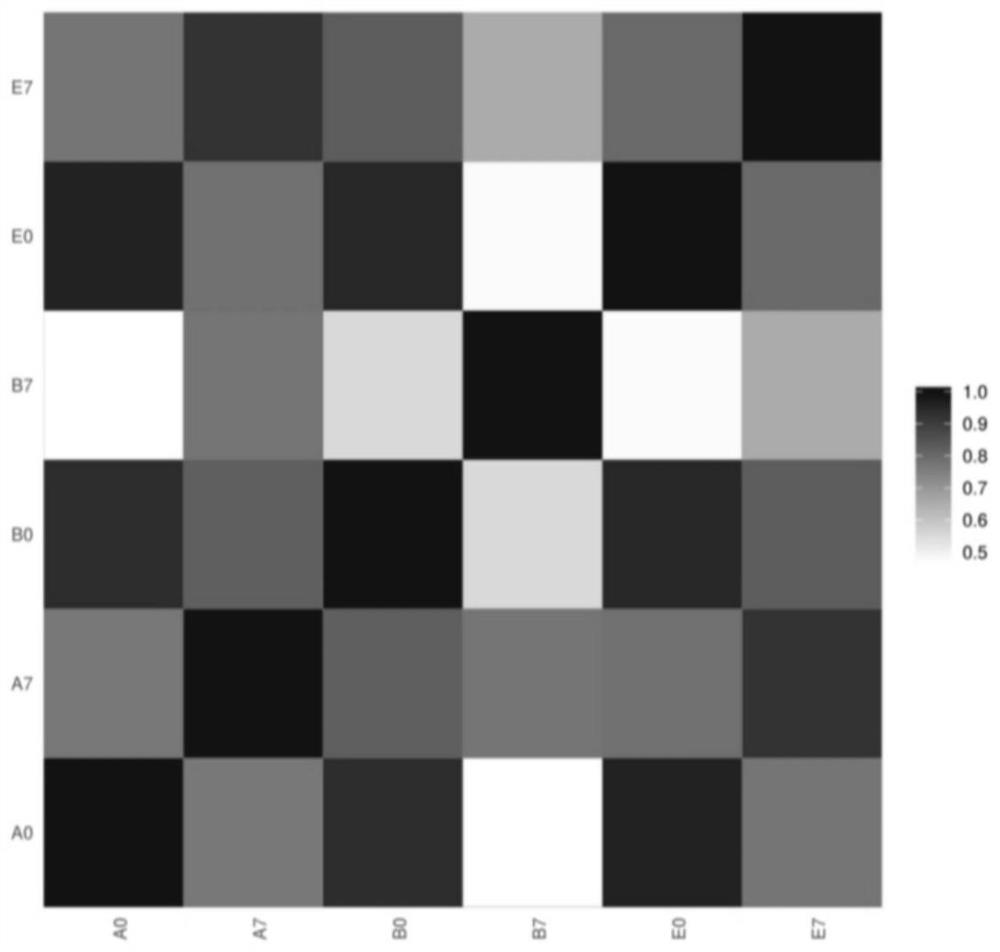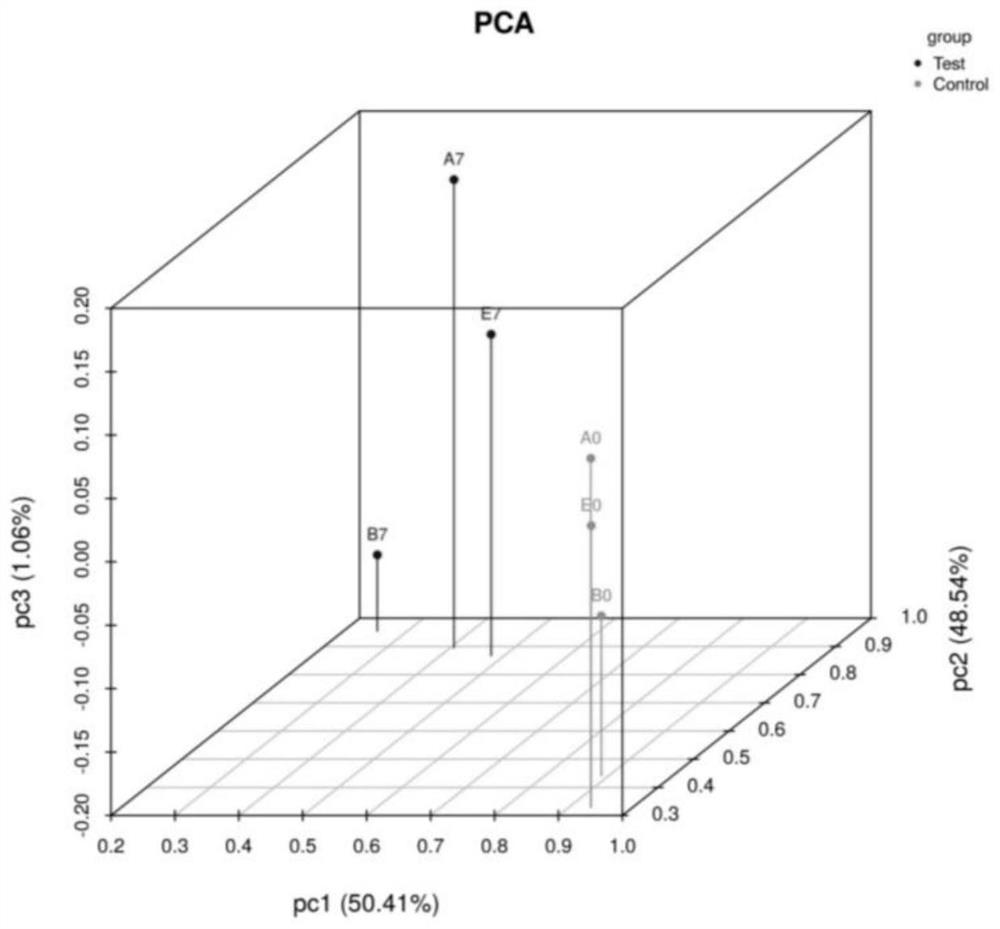LMO3 gene for regulating and controlling ADSCs osteogenic differentiation and tissue regeneration, and application thereof
A bone tissue regeneration and osteogenic differentiation technology, applied in the field of bone tissue regeneration, can solve problems that have not been reported
- Summary
- Abstract
- Description
- Claims
- Application Information
AI Technical Summary
Problems solved by technology
Method used
Image
Examples
Embodiment 1
[0066] Example 1 Isolation and cultivation of human adipose stem cells
[0067] Abdominal adipose tissue was collected during liposuction and stored in a 20mL sterile syringe for later use, and stored in ice packs. Adipose tissue was centrifuged in a 50mL centrifuge tube at 1000rpm / 5min to remove the lower liquid. Adipose tissue was digested with 0.2% type I collagenase at a ratio of 1:1 for 40 minutes on a shaker at 37°C. After standing still, it could be seen that it was divided into three layers. Remove the upper grease layer, fully shake and filter (200 mesh filter). Then centrifuge at 1000rmp / 5min for three times to remove the supernatant liquid, and the cell sediment therein can be seen. Pipette the cells evenly with cell culture medium. Cells were then seeded in culture dishes at a density of 5 × 10 5 / mL. The cells were then placed at 37°C, 5% CO 2 , 95% humidity incubator. Subculture to the third generation to obtain the third generation adipose stem cell hADSC...
Embodiment 2
[0068] Example 2 Joint analysis of GEO database and mRNA sequencing results
[0069] The series matrix files of GSE63754, GSE89330 and GSE72429 were downloaded from the GEO database (http: / / www.ncbi.nlm.nih.gov / geo / ). The platforms they are based on are GPL17077 (Agilent-039494SurePrint G3 Human GE v2 8x60K Microarray 039381), GPL16956 (Agilent-045997Arraystar Human lncRNA Microarray V3) and GPL16770 (Agilent-031181Unrestricted_Human_miRNA_V16.0_Microarray).
[0070] The GSE63754 dataset includes 3 ADSC osteogenic differentiation datasets and 3 control cell differentiation datasets. The GSE89330 dataset includes 4 datasets of osteogenic differentiation of ADSCs and 4 datasets of undifferentiated ADSCs. The GSE72429 dataset includes 4 datasets of ADSCs differentiated into osteoblast lineages and 4 datasets of undifferentiated cells from the same donor. mRNA sequencing was performed during hADSC osteogenic differentiation. By calculating the correlation between the two sample...
Embodiment 3
[0074] Example 3 Cell Functional Verification of LMO3 in ADSCs Osteogenic Process
[0075] 1. The adipose-derived stem cells were induced to osteoblast 0d, 7d, and 14 days respectively, RNA was extracted, and the expression trend of LMO3 at different times was detected by RT-qPCR. RT-q PCR was used to detect the expression changes of LMO3 after osteogenic induction of adipose-derived stem cells on day 0, day 7, and day 14 as follows: Image 6 As shown, the expression of LMO3 increases over time during osteogenic differentiation.
[0076] 2. Design and transfection of small interfering RNA sequences
[0077] Primers were designed for the LMO3 sequence. The primers were synthesized and purified by Shanghai Gemma Biotechnology Co., Ltd., and small interfering RNA sequences were designed to inhibit the expression of LMO3.
[0078] According to the starting and ending points of the human LMO3 sequence as its splicing point, design the best si RNA target point of the circ RNA base...
PUM
 Login to View More
Login to View More Abstract
Description
Claims
Application Information
 Login to View More
Login to View More - R&D
- Intellectual Property
- Life Sciences
- Materials
- Tech Scout
- Unparalleled Data Quality
- Higher Quality Content
- 60% Fewer Hallucinations
Browse by: Latest US Patents, China's latest patents, Technical Efficacy Thesaurus, Application Domain, Technology Topic, Popular Technical Reports.
© 2025 PatSnap. All rights reserved.Legal|Privacy policy|Modern Slavery Act Transparency Statement|Sitemap|About US| Contact US: help@patsnap.com



